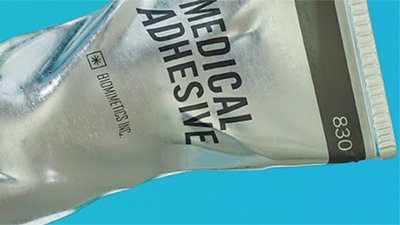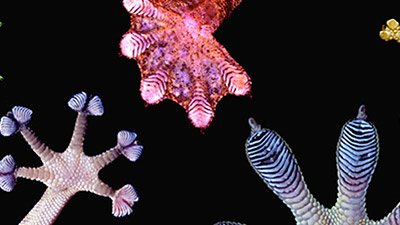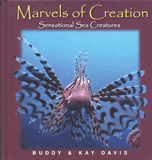Superglue From A Sea Worm May Mend Bones
PhysOrg: “Superglue from the Sea: Synthetic Sea Worm Glue May Mend Shattered Knee, Face Bones” Fracture a bone? Let us put it back together with our worm glue.
The lowly sandcastle worm spends its time building tube-shaped homes out of small bits of sand and shell, all held together by a glue it produces. University of Utah bioengineer Russell Stewart describes, somewhat humorously, how the worm grabs pieces, adds glue, then “puts it onto the end of the tube and holds it there for about 25 seconds, wiggling it a little to see if the glue is set, and then it lets go.”
The sandcastle worm’s glue stays strong in its wet environment.
Now, Stewart and colleagues at the University of Utah have created a synthetic version of the glue and are hopeful it will one day have medical applications. But right now the “first-generation prototype” of the synthetic glue performs only 37 percent as well commercial superglue. So what’s the draw?
Unlike most glues, which weaken when wet, the sandcastle worm’s glue stays strong in its wet environment. University of Utah bioengineer Patrick Tresco explains, “Most current adhesives do not work when surfaces are wet so they are no good for holding together bone, which is wet and bloody. There is nothing like [the sandcastle worm’s glue] on the market today.”
That could be useful in repairing smaller fractures, such as non-weight-bearing joints or fractures in the face, or assisting rods, pins, and screws in larger fractures. “An adjunctive adhesive could reduce the number or volume of metal fixators while helping maintain accurate alignment of small bone fragments to improve clinical outcomes,” the bioengineers report in Macromolecular Biosciences.
Not only that; the glue could even be a vehicle for administering a variety of drugs to the fracture site—painkillers, growth factors, antibiotics, anti-inflammatory medicines, or stem cells. This would also be a marked improvement over today’s treatment of fractures.
As the team continues to improve their synthetic recreation of the sandcastle worm’s glue, they hope to make the concoction biodegradable, so that it will eventually be replaced by re-grown bone. They hope to test the glue on animals soon, with possibly human tests in 5 to 10 years.
This wet-environment glue is yet another bit of “biotechnology” from God’s creation that amazes scientists and could have useful new applications—once the engineers perfect their “re-creation”!
For more information:
- Get Answers: Design Features
Remember, if you see a news story that might merit some attention, let us know about it! (Note: if the story originates from the Associated Press, Fox News, MSNBC, the New York Times, or another major national media outlet, we will most likely have already heard about it.) And thanks to all of our readers who have submitted great news tips to us.
(Please note that links will take you directly to the source. Answers in Genesis is not responsible for content on the websites to which we refer. For more information, please see our Privacy Policy.)
Recommended Resources

Answers in Genesis is an apologetics ministry, dedicated to helping Christians defend their faith and proclaim the good news of Jesus Christ.
- Customer Service 800.778.3390
- © 2024 Answers in Genesis







